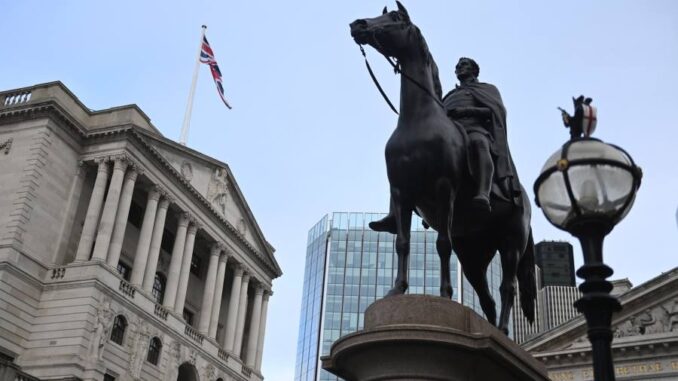
The UK Treasury and Bank of England are designing a “digital pound” that could supplant banknotes by the end of this decade and fend off a Big Tech competitor.
With the decline of cash, ministers and officials think there is likely to be a need for a publicly-backed digital currency that would sit in wallets on smartphones and could be used for shopping much like notes and coins.
Consumers already accustomed to fast digital payments would see few obvious differences, but the core infrastructure would be part of the central bank and could be guaranteed to be available for everyone to use.
Officials believe a digital pound would ensure the BoE maintains control of the heart of the UK financial system and prevent any private company from keeping payments within a closed network.
A final decision on whether to go ahead will be taken around 2025, the Treasury said, when it would decide whether the potential benefits of implementing a new payments infrastructure outweighs the costs and risks.
One potential danger, flagged previously by the House of Lords and the BoE, is that a new central bank digital currency could increase financial instability if households and companies all withdrew money from commercial banks at once to put in a government-backed digital pound.
To guard against this, the Treasury said it would initially place a limit on the amounts that could be held in the new wallets, even though such constraints would reduce the digital currency’s usefulness as a payment system.
In starting the detailed design, officials are seeking to ensure that a digital pound could play a similar role to cash — allowing seamless payments, not receiving any interest and forming the backbone of currency in the UK.
This, they think, would help knit together different private sector payments systems, ranging from debit and credit cards, to fintech companies such as Monzo and Revolut and new stablecoins from cryptocurrency providers.
Andrew Bailey, BoE governor, said the case in favour of a central bank digital currency “continues to grow”, but highlighted there were concerns that needed addressing before taking “a profound decision for the country on the way we use money”.
With the private sector already providing effective payments infrastructure, a House of Lords’ report last year said that central bank digital currencies were “a solution in search of a problem”.
Recommended
Official digital currencies are nonetheless becoming fashionable in the central banking circles. As of December 2022, 114 countries are exploring CBDCs, according to the Atlantic Council. Close to 30 governments including China, the Bahamas and Jamaica have either fully launched CBDCs or are currently running pilot schemes.
The rationale varies. Analysts see China’s “digital renminbi” as supporting greater surveillance and as an alternative to homegrown and international payment systems. The central bank of the Bahamas lists financial inclusion and stronger anti-money laundering systems as its rationale for launching the “sand dollar”.
An investigation into a digital euro launched by the EU is due to conclude in October, after which the bloc will decide whether to begin development. In the US, the Federal Reserve Banks of Boston and New York have been investigating retail and wholesale uses for CBDCs, respectively.






Be the first to comment